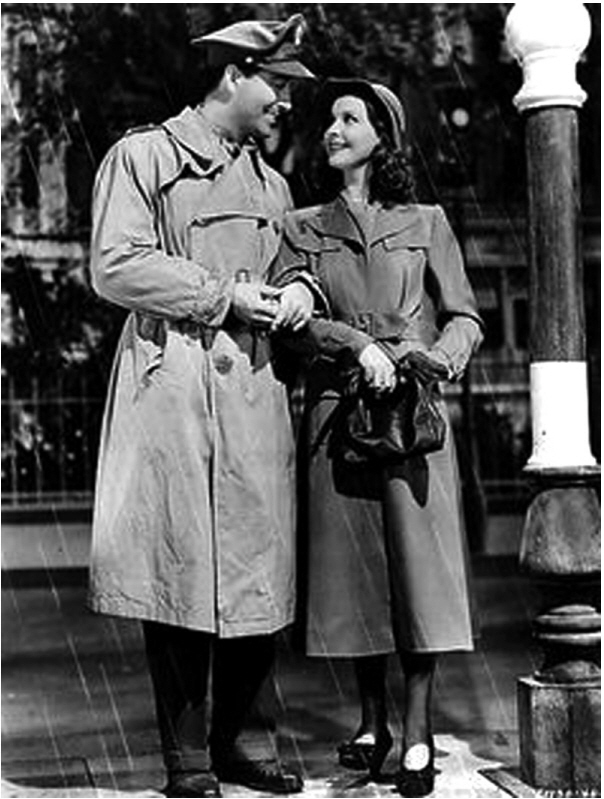Trench coats, Cushing, and Gillies
Article information
In early spring and in late autumn, stylish dressers love to wear trench coats. Trench coats are raincoats made of waterproof heavy-duty cotton gabardine drill, leather, or poplin. Dandies wear trench coats, which are popular in Seoul and in London. This coat was developed prior to the war, but was adapted for use in the trenches of the World War I (WWI). It was an item of clothing worn by Army officers. I vividly remember Robert Taylor and Vivien Leigh wearing stylish trench coats in “Waterloo Bridge” (1940) (Fig. 1), as well as Humphrey Bogart in “Casablanca” (1942).
The most famous instance of trench warfare was the Western Front in WWI. In this war, the machine gun first appeared. Soldiers stayed in trenches, in which troops were well-protected from the enemy’s fire and sheltered from artillery. In the trenches, soldiers could hide their body. However, their head and face were exposed to the enemy’s fire, and therefore head and facial trauma occurred frequently.
Harvey Cushing (1869–1939) made major contributions to the treatment of head injuries. When he was at a French military hospital in 1917, he extracted fragments of metallic missile shrapnel that were lodged deeply within the brain using electromagnets. During 4 months in 1917, he treated 219 wounded soldiers, including 133 gunshot wounds that penetrated the dura mater. He developed debridement using negative pressure, and dura repair using the fascia lata. He also systematized the treatment of head injuries, reducing mortality among head injury patients.
When WWI began, Gillies joined the Royal Army Medical Corps and met many soldiers who had facial trauma. After his returned to England, he devoted himself to facial repairs at the Queen’s Hospital. He developed many plastic surgery techniques. From 1917 to 1925, he performed more than 11,000 operations on 5,000 soldiers with facial injuries. His experiences with head and facial injury became the basis of craniofacial surgery, and his advances were also applied to congenital craniofacial malformations. He wrote “A new principle in the surgical treatment of ‘congenital cleft palate’ and its mechanical counterpart” in 1921. His technique for the treatment of cleft hard and soft palate was based on a combined surgical and dental treatment strategy.
Through treating severely injured faces, he accumulated surgical experiences with the face that led to the development of aesthetic surgery. Most of the principles of modern facial plastic surgery were developed during the 20 years between WWI and WWII. As such, plastic surgery aims for humanity before beauty.
Notes
No potential conflict of interest relevant to this article was reported.
Acknowledgements
This study was supported by a grant from National Research Foundation of Korea (NRF-2017R1A2B4005787).
